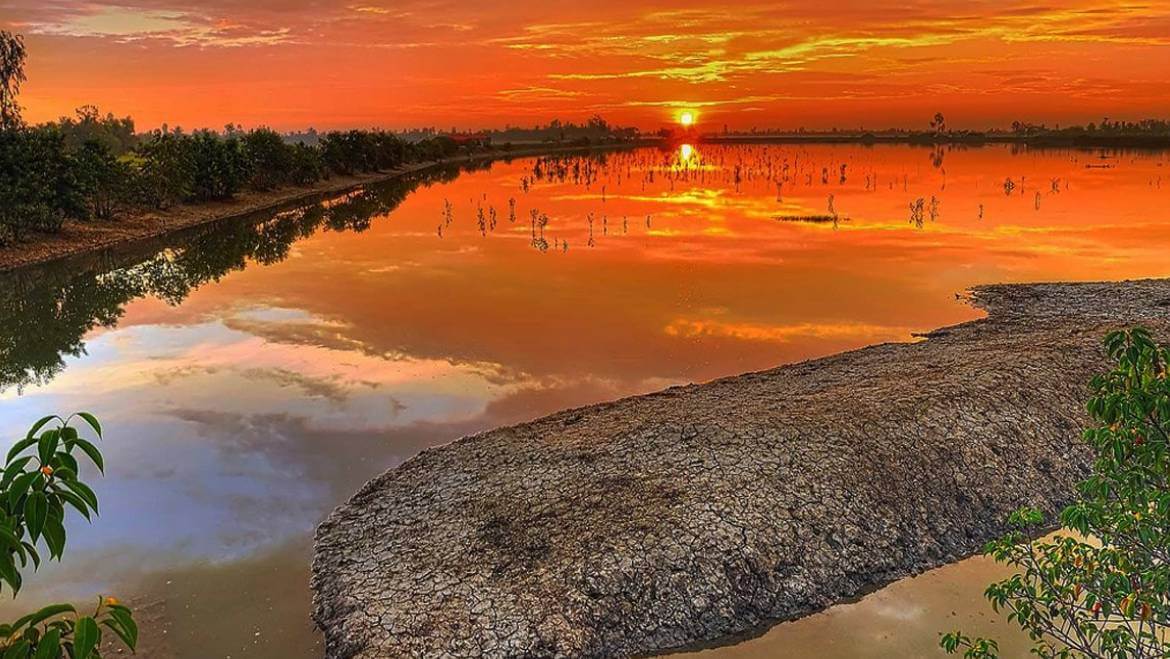Everything About Sundarban: The Sundarban, a UNESCO World Heritage Site, is a place where nature’s raw beauty, unparalleled biodiversity, and human culture come together in perfect harmony. Located at the delta formed by the confluence of the Ganges, Brahmaputra, and Meghna rivers, the Sundarban is not only the largest mangrove forest in the world but also one of the most ecologically significant regions on the planet. Let’s delve deeper into this topic “Everything About Sundarban”.
In this comprehensive guide, we’ll cover everything you need to know about the Sundarban, including its history, geography, wildlife, cultural significance, and tips for visiting this enchanting destination. Plus, discover how Royal Sundarban Tourism can make your journey seamless and unforgettable.

1. Where is the Sundarban Located?
The Sundarban spans across West Bengal, India, and Bangladesh, covering an area of over 10,000 square kilometres. This intricate network of mangrove forests, rivers, creeks, and mudflats forms the largest delta in the world.
Geographical Highlights:
- Indian Sundarban: Covers approximately 4,260 square kilometers, including the Sundarbans National Park.
- Bangladesh Sundarban: Encompasses the remaining portion, offering shared biodiversity and cultural ties.
- Key Features: Mangroves, tidal waterways, estuarine islands, and mudflats.
2. The History of Sundarban
The Sundarban’s history is as fascinating as its ecosystem. Its name is derived from the Sundari tree, a dominant mangrove species. Historically, the Sundarban was a place of both reverence and fear for its dense forests, wildlife, and natural challenges.
Historical Highlights:
- Colonial Period: The British initiated reclamation projects in the 18th century, converting parts of the forest into agricultural land.
- Conservation Efforts: The Sundarbans National Park was established in 1984, and it gained UNESCO World Heritage Site status in 1987.

3. Why is Sundarban Famous?
The Sundarban is globally renowned for its:
- Biodiversity: Home to the iconic Royal Bengal Tiger and countless other species.
- Unique Ecosystem: The largest mangrove forest ecosystem, vital for global environmental health.
- Cultural Heritage: Rich in folklore, festivals, and sustainable living practices of local communities.
4. Wildlife in the Sundarban
The Sundarban is a biodiversity hotspot, offering a sanctuary to a wide array of species. Its unique environment supports some of the rarest wildlife on Earth. Feel free to share more details so we can discuss further “Everything About Sundarban”.
Key Species:
- Royal Bengal Tiger: The apex predator of the region, known for its swimming abilities and adaptability to mangrove habitats.
- Estuarine Crocodile: Among the largest reptiles in the world, frequently spotted in the waterways.
- Bird Species: Over 260 species, including kingfishers, herons, and migratory birds like Siberian cranes.
- Aquatic Life: Gangetic dolphins, mudskippers, and numerous fish species.

Other Notable Wildlife:
- Spotted deer
- Wild boars
- Fishing cats
- Monitor lizards
- Snakes, including the king cobra and python
5. The Unique Mangrove Ecosystem
Mangroves are the lifeline of the Sundarban, offering protection, sustenance, and stability to the region.
Key Features of Mangroves:
- Salt Tolerance: Mangrove species like the Sundari tree thrive in saline conditions.
- Unique Root Systems: Prop roots and pneumatophores help them anchor in tidal zones and breathe in oxygen-poor soil.
- Ecosystem Benefits: Mangroves act as natural barriers against cyclones, floods, and erosion while supporting biodiversity.
6. Cultural Significance of the Sundarban
The Sundarban is not just about nature; it’s a cultural hub where humans and wilderness coexist in harmony.
Key Cultural Highlights:
- Bonbibi Worship: Bonbibi, the forest goddess, is revered as the protector of locals against dangers like tiger attacks.
- Traditional Livelihoods: Communities rely on fishing, honey collection, and crab farming for their sustenance.
- Local Festivals: Events like the Bonbibi Utsav blend folklore, rituals, and music, reflecting the region’s spiritual connection to the forest. We can explore this further in “Everything About Sundarban”.
7. Why Should You Visit the Sundarban?
Visiting the Sundarban is a once-in-a-lifetime experience for nature enthusiasts, adventurers, and culture seekers.
Top Reasons to Visit:
- Witness the Royal Bengal Tiger in its natural habitat.
- Explore the world’s largest mangrove forest.
- Experience thrilling boat safaris through serene waterways.
- Immerse yourself in the rich culture and traditions of local communities.
- Enjoy unmatched tranquillity and natural beauty.

8. How to Explore the Sundarban?
Exploring the Sundarban requires careful planning due to its challenging terrain and remote location.
Must-Visit Places:
- Sajnekhali Watch Tower: Ideal for wildlife spotting and birdwatching.
- Sudhanyakhali Watch Tower: Offers opportunities to spot tigers and other wildlife.
- Dobanki Canopy Walk: A unique elevated walkway through the mangroves.
- Netidhopani: Historical ruins surrounded by dense forests.
- Bonnie Camp: The tallest watchtower offering panoramic views.
9. Best Time to Visit Sundarban
The best time to visit the Sundarban is between November and February, when the weather is pleasant, and wildlife activity is at its peak.
Why Avoid Monsoons?
Heavy rains from July to October make the region inaccessible and increase the risk of flooding.
10. How Royal Sundarban Tourism Can Enhance Your Experience
Visiting the Sundarban can be challenging without proper guidance. Royal Sundarban Tourism, a genuine and registered organization, ensures a seamless, safe, and enriching experience. Let’s delve deeper into this topic “Everything About Sundarban”.
Also, you can Book the Sundarban Tour At Maity Tourism and Sundarban Leisure Tourism Powered By Argusdna,

What Royal Sundarban Tourism Offers:
- Expert Guides: Knowledgeable naturalists provide insights into the Sundarbans ecology, wildlife, and culture.
- All-Inclusive Packages: Includes transportation, accommodation, meals, and guided tours.
- Safe and Comfortable Travel: Well-maintained boats and eco-resorts ensure a hassle-free journey.
- Customized Itineraries: Tailored to your interests and schedule.
Everything About Sundarban
- Website: Royal Sundarban Tourism
- Phone: +91 7439965413 / +91 8584838109
- Payment Options: GPay and PhonePe at 9804049535
- Email: info@royalsundarbantourism.com
- Address: Village: Tiger More, Gosaba, Pakhiralay, District- 24 Parganas South, West Bengal 743370

